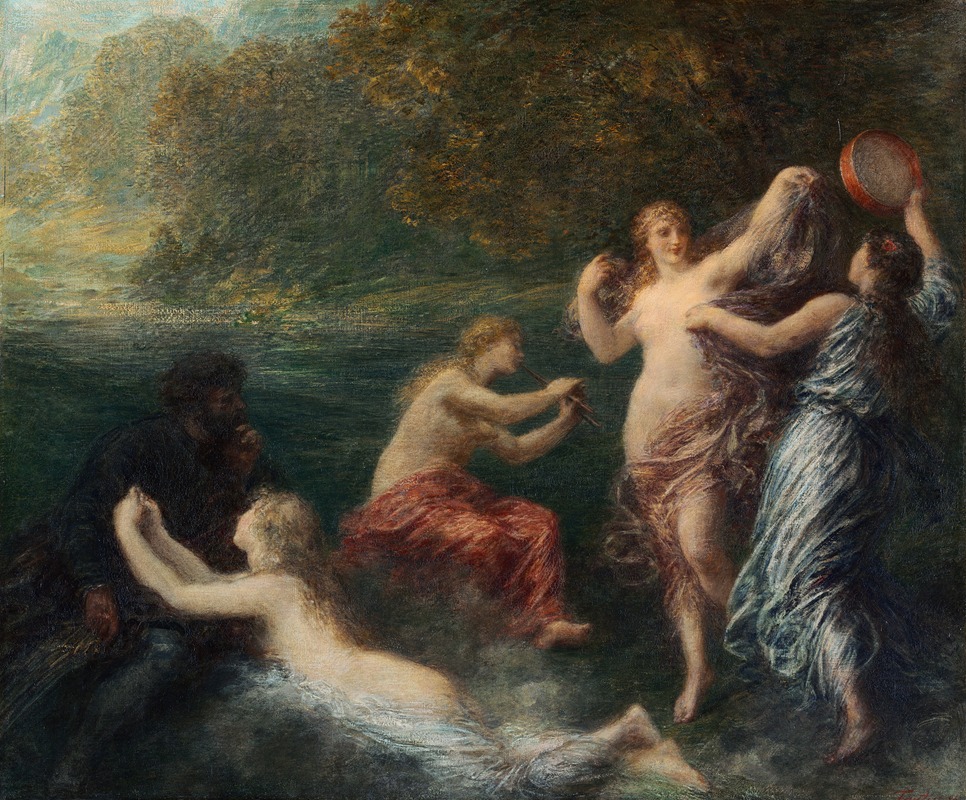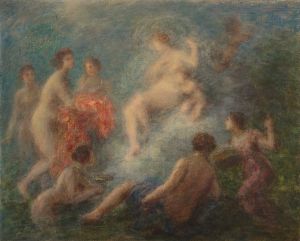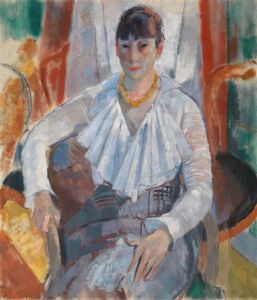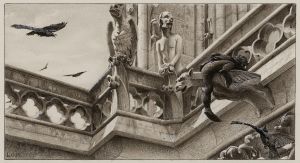
Tannhäuser
A hand-painted replica of Henri Fantin-Latour’s masterpiece Tannhäuser, meticulously crafted by professional artists to capture the true essence of the original. Each piece is created with museum-quality canvas and rare mineral pigments, carefully painted by experienced artists with delicate brushstrokes and rich, layered colors to perfectly recreate the texture of the original artwork. Unlike machine-printed reproductions, this hand-painted version brings the painting to life, infused with the artist’s emotions and skill in every stroke. Whether for personal collection or home decoration, it instantly elevates the artistic atmosphere of any space.
Henri Fantin-Latour was a French painter known for his exquisite still lifes and group portraits. Among his works, "Tannhäuser" stands out as a significant piece that reflects his interest in music and the arts. Painted in 1886, "Tannhäuser" is inspired by the opera of the same name by the German composer Richard Wagner. Wagner's opera, first performed in 1845, tells the story of the medieval German poet and knight Tannhäuser, who struggles between sacred and profane love, ultimately seeking redemption.
Fantin-Latour's "Tannhäuser" captures the essence of Wagner's dramatic and romantic themes. The painting is an allegorical representation rather than a direct illustration of a specific scene from the opera. It reflects Fantin-Latour's fascination with Wagner's music, which was a significant influence on many artists and intellectuals of the time. The painting is part of a series of works by Fantin-Latour that were inspired by music, showcasing his ability to translate musical compositions into visual art.
In "Tannhäuser," Fantin-Latour employs a dreamlike quality, using soft, muted colors and delicate brushwork to create an ethereal atmosphere. The figures in the painting are depicted with a sense of grace and fluidity, embodying the romantic and mystical qualities associated with Wagner's opera. Fantin-Latour's attention to detail and his ability to convey emotion through subtle expressions and gestures are evident in this work.
Fantin-Latour was known for his ability to capture the spirit of the subjects he portrayed, whether they were still lifes, portraits, or allegorical scenes. His interest in music, particularly the works of Wagner, was a recurring theme in his art. He often attended concerts and was deeply moved by the power of music, which he sought to express through his paintings.
"Tannhäuser" is housed in the Musée d'Orsay in Paris, which holds a significant collection of 19th-century art. The painting is an example of Fantin-Latour's mature style, characterized by its poetic and introspective qualities. It reflects the broader cultural context of the time, when Wagner's music was gaining widespread popularity and influencing various art forms.
Fantin-Latour's work, including "Tannhäuser," continues to be appreciated for its ability to convey the emotional depth and complexity of its subjects. His paintings offer a glimpse into the artistic and cultural milieu of 19th-century France, where music and visual art were often intertwined. Through "Tannhäuser," Fantin-Latour not only pays homage to Wagner but also demonstrates his own artistic vision, blending the auditory and the visual to create a harmonious and evocative work of art.


















